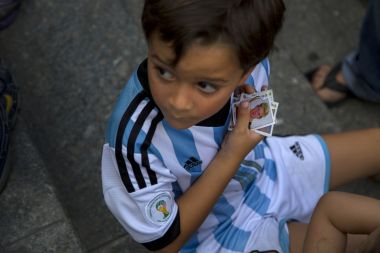The loom band plague - and four more crazes that are gripping adults and kids alike

My house has a pest infestation. They first appeared just a few weeks ago – but now they seem to be breeding at a speed with which even Rentokil would struggle to keep up. They're in the carpet. I'm finding them in the pockets of my clothes. They're everywhere. The name of this creature?
The loom band.
It's almost inconceivable in this age of fast-moving technological advancement and multi-channel multimedia, that the biggest craze currently gripping the nation's youth is a small rubber band. Or rather, millions of the things. Coming in every imaginable colour (including glow-in-the-dark), and also available in a number of smells (!), Loom bands can be joined together to create various types of bracelet – or for more advanced loomers, more complicated jewellery and objects. They're the new building block for child creativity – and they've taken over the nation.
The bands were popularised first in the United States, where Michigan toy inventor Cheong Choon Ng invented the 'Rainbow loom' – a plastic pegboard which can be used to loop the bands together. The loom – which has now sold millions of units in the US – simplifies and teaches a knotting process which can also be performed by hand. This year the craze spread beyond the US – allegedly after the Duchess of Cambridge was seen sporting a loom bracelet on a tour of New Zealand.
Now mums and dads across the UK are forced to sport the bracelets (to my shame, I'm wearing a rainbow-coloured one right now), and vacuum cleaner repair shops are seeing a spike in visits from parents who've clogged their Dyson with a multicoloured mass of rubber.
Not that many of us are complaining. Loom bands are a creative activity which keeps children focussed (and one might add, quiet) on a complicated task. It's a communal activity; it creates a context for children to make gifts of 'value' to give to those they like and love. It has an end product which gives them a sense of achievement and pleasure. With all those positives attached, parents are more than happy to sport slightly silly-looking wrists. Just make sure the bands aren't too tight; horror stories abound of casualty-department visits from children whose bracelet-adorned arms have turned a worrying colour.
The bands are aimed at children, but what's interesting is that they've been adopted by a far wider age range. Recent conversations with teachers have revealed that the bands are popular all the way through to the sixth form age group, while many students and other young adults have also been dragged into the craze's gravitational pull.
This is nothing new. Childhood fads are often adopted by a wider age range, either due to a natural broad appeal, or because of the extension of adolescence. This wider market has helped 'tip' loom bands into phenomenon territory – the question as ever remains: how long will they stay there?
Right now they're the biggest craft activity going. Any church children's or youth worker who hasn't already made a bulk order of the bands should do so immediately – while vicars should already be working on a clever confession illustration involving a rainbow loom. From nowhere, loom bands are at the heart of youth culture – a creative craze with so many positive aspects. Aside from the vacuum cleaner repair bill, what's not to like?
Four more things that have gripped kids and adults alike in 2014:

Minecraft - Another creative craze, although this one's online. This simple, click and build system of 'digital lego' is the biggest video game phenomenon of recent years – and with the right parental supervision, it's a very positive experience. For much more on that, and what is says about our culture, check out my article in the brand new issue of Christianity magazine.
Pokemon cards - It's the expensive japanese video game / toy / trading card phenomenon that just won't die. Children (and adults) continue to pay £10-£13 a time for a tin of cards, which feature an array of weird little creatures that I'm not even going to pretend to understand.

Panini World Cup stickers - They were 20p for six in my day – now they're a whopping 50p, and you only get five! Despite the exorbitant price point (one economist calculated that it costs a minimum of £75 to complete the album), the stickers have sold in their billions and have been collected by as many men trying to relive their youth as by children.
Tamagotchi friends - Another Japanese fad that won't die – this one's back from the dead, which is fitting since the aim of the game with these pocket-fitting digital pets is to keep them 'alive.' Relaunched at the end of last year, the low-tech toys retail at £25 – an extraordinary price point considering that they look like they're from 1982.
Martin Saunders is the Creative Director at Youthscape. Follow him on twitter @martinsaunders











